Guitars come in all shapes and sizes. Ideally, you will find the one that’s suited for your size, and there are so many different things to consider. If you get a guitar that’s too big, you might struggle while learning how to play. On the other hand, the smaller guitar can be too small, and it won’t be as comfortable for you to use it.
As with the Goldilocks, you will need to find one that’s a perfect size for you. I should mention that both acoustic and electric guitars are available in different sizes, which doesn’t apply to the instrument’s body exclusively.
To better understand what are the important factors, differences in guitar parts, and how to find the one perfect for you, I will cover all the different sizes and types of guitars you can find. Hopefully, you will have a better understanding of how everything works, and what are your options if you are looking to buy a new instrument.
How To Measure A Guitar?

There are two primary ways to measure a guitar, and both methods work for either acoustic or electric guitars. The first method is to measure the entire length of the guitar from top to bottom. The second method is to measure the length from the nut to the bridge, which is called the scale length.
How To Measure Guitar’s Total Length
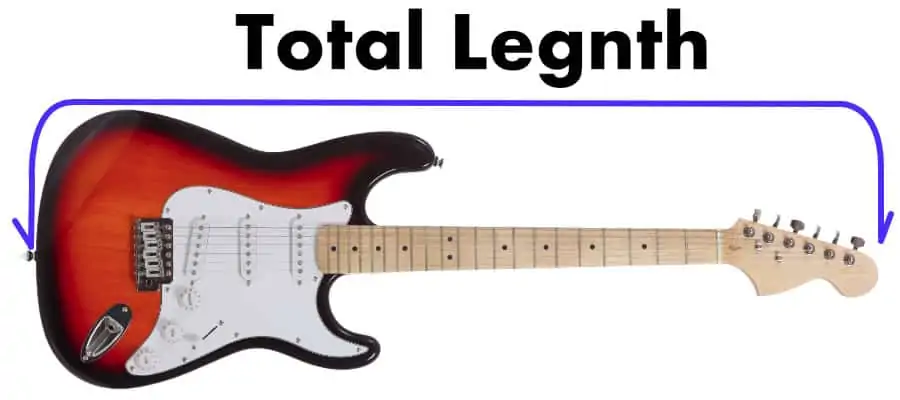
To measure the total length of the guitar you measure at the end of the body up until the end of the headstock.
While this method might be useful to some people, it’s not something that will offer you a lot of information. That because electric guitar may have some unusual body, headstocks, or even headless (without headstocks). This measurement is important if you are looking to buy a new case or gig bag for your instrument.
for example, the Strandberg Boden standard (headless electric guitar) has a total length of 31.5″ (80cm) while the fender Stratocaster is somewhere around 39″ (100cm), depending on the model of course. This is a huge difference between those two guitars. However, both of them have the same scale length of 25.5″, which is the measurement that really matters.
How To Measure Guitar’s Scale Length
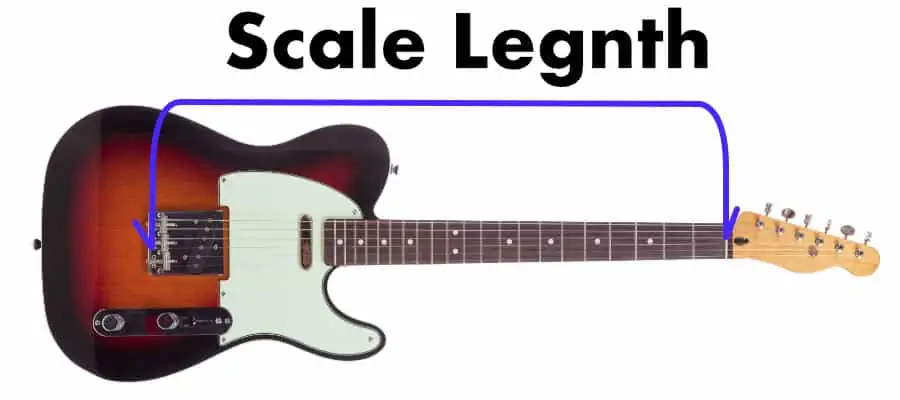
To measure scale length, you can either measure the distance from the bridge to nut or measure it from nut to 12th fret and multiply it by two. This measurement is something you should be checking if you are looking for a new guitar since it will give you an idea of how the guitar feels.
In essence, the scale length is the length of the string that can oscillate, and changing it even the slightest can alter the feel of the guitar.
Scale lengths are important for both acoustic and electric guitar, and they can give you an overall idea of the size and what you can expect from the instrument. Usually, the scale length is standardized, and the majority of companies will stick to the same number regardless of the model.
For example, Fender uses 24” or 610 mm for Jaguar and Mustang, Santana’s PRS is 24.5”, the majority of Gibsons is 24.75”, and Fender (besides what I mentioned), Jackson, Ibanez, Squier, Schecter, and others usually use 25.5”.
There are no rules, and each model can be different. However, two values you should remember are 24.75” for Gibson and 25.5” for Fender.
Neck Width
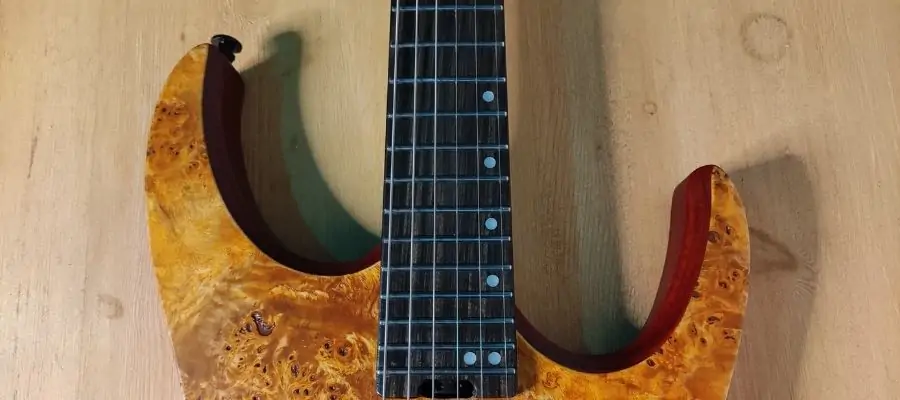
Since you will be using the neck of the guitar every time you play it, you will need to find something comfortable. I already talked about scale length, and it affects the length of the neck as well. But neck width is also a thing to consider even if it doesn’t affect the scale length.
Some people love wider necks, others love slimmer, and it is up to you to decide which one you like the most. Classical guitars can have wider necks which make them a bit challenging to play, especially for children.
What Is A Full Size Guitar?

Now that I’ve covered the two most popular ways of measuring the guitar, let’s talk about full-size instruments. The reason why this term is so important is that the guitar sizes are based on the full-size guitar.
Of course, the main problem here is that there is no universal number for full-size guitar, and it is different for each model and brand. For example, a standard Fender Stratocaster is a full-size guitar, but the same thing applies to Gibson ES-335.
Usually, the full-size guitars are around 38 inches in length, with a 25.5” scale length. If you are wondering whether your guitar is full-size or something else, all you need to do is measure the scale length. In the majority of cases, the guitar with a scale length of around 25 inches is a full-size instrument.
Different Acoustic Guitar Sizes
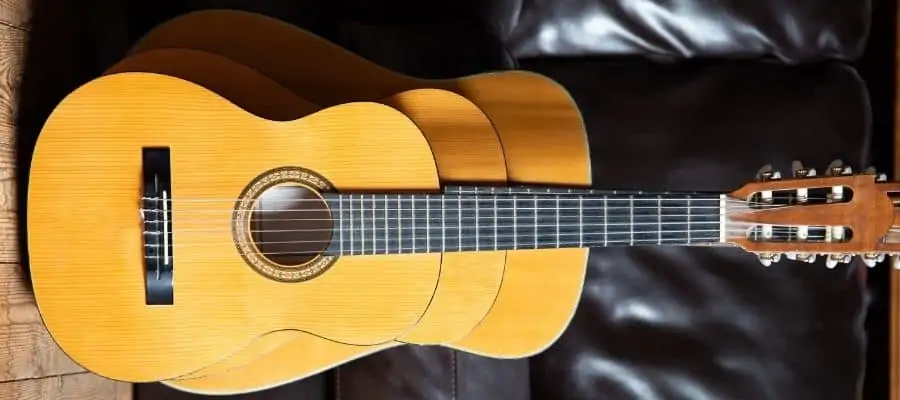
The primary reason why I talked about full-size guitars is that smaller models are based on the original guitar. The process of understanding the guitar size is quite simple, and all you need to know is the original model and dimensions. However, you should keep in mind that the names of these guitars can be a bit misleading, and things aren’t the way they seem to be.
- 1/4 size guitar – The smallest option you can find is a 1/4 acoustic guitar. The first thing I should mention is that quarter-size guitars are not really one-quarter of the original model. Usually, these guitars have a smaller scale length, and it is around 19″ (48cm). The total length of the instrument is around 31″ (78cm).
- 1/2 size guitar – Following the previous example, a half-size guitar is not half of the original. The length of the instrument is slightly larger compared to the quarter-size guitars, and smaller than 3/4 models. Half-scale instruments are around 33″ (86cm).
- 3/4 size guitar – 3/4 guitars are slightly smaller compared to the full-size instruments, and in reality, the size is close to 7/8 of the original model. Three-quarters guitars are usually 36″ (92cm).
- 4/4 – 4/4 is a full-size guitar used for reference.
The idea behind different models is that you can easily find the one suitable for you and your needs. Naturally, the smallest models are usually meant for children, but this doesn’t have to be the case. If you are comfortable playing a ¾ guitar, then it is the right choice for you.
Acoustic Guitar Types Based On The Size And Shape
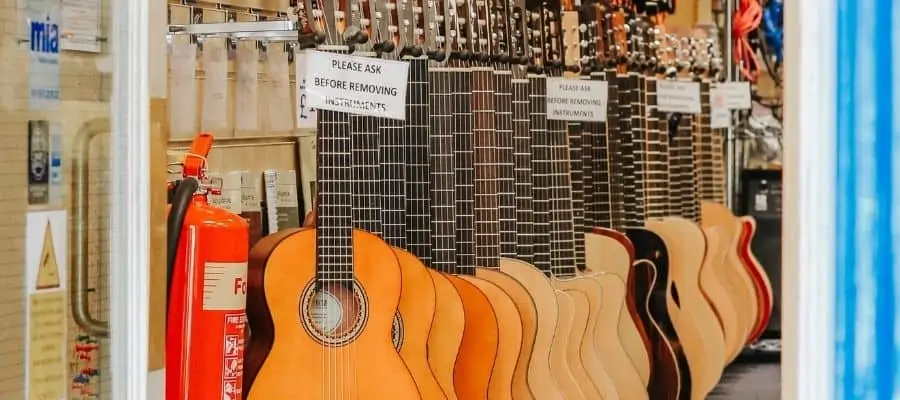
One of the things you are probably aware of is that there are different types or rather shapes of acoustic guitars. Each of these models is full-sized instruments, but the difference between them is huge.
Of course, as with many things in the music industry, this isn’t standardized so you might be able to find a model in between the ones I will mention, as well as different options of the following guitars.
Parlor Acoustic Guitar
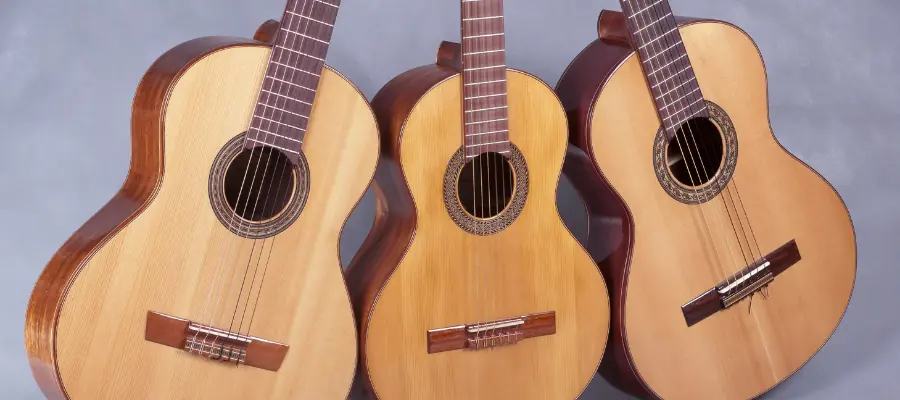
The first one on the list is a parlor guitar. The parlor or parlour guitars are generally the smallest guitars you can find. Bear in mind that parlor guitars are still full-size instruments, and they aren’t scaled like the previous versions I mentioned.
If you are looking for a budget parlor guitar, check out my post Top 20 Budget Parlor Guitars Under $200,$300, $400, $500
Parlour guitars are perfect for those with smaller hands and people who simply enjoy playing a smaller model. Furthermore, parlor guitars were rather popular in the fifties, and many blues and folk players loved using them.
Probably the main reason for the popularity is that the parlor guitars were more affordable compared to the alternative.
Concert Acoustic Guitar
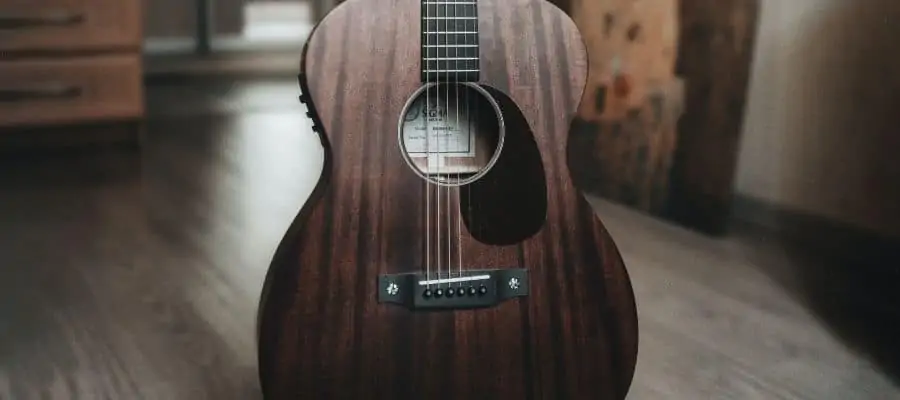
These models are quite similar to the parlor guitars, and the only difference is that the concert guitar has a slightly larger body. As a result, it can offer a richer sound, and it’s perfect for everyone looking for a smaller guitar with a beautiful sound.
It is also possible to find the grand concert guitars, which are almost a bridge between standard concert and auditorium guitars.
Auditorium Acoustic Guitar
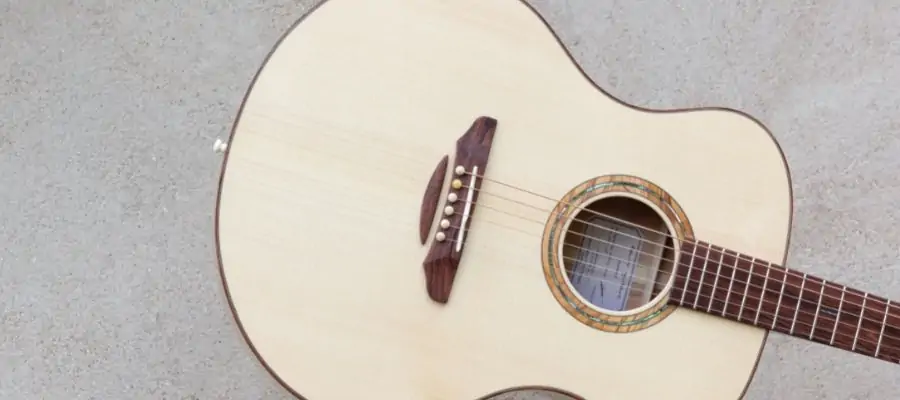
Here, we have a guitar that is quite bigger compared to the parlor, and it’s one of the bigger models. The main difference between the auditorium and the other models I’ll mention is that this one is a bit thinner.
This makes it easier for playing if you plan on sitting, and it works great for anyone regardless of their size. The auditorium guitars also have curved waist, which allows players to use them while sitting.
Usually, people who enjoy the “bigger” tone might consider picking the auditorium guitars, since they won’t need to worry about the guitar’s size.
Similar to the concert guitar, you can also find grand auditorium models, which can act as a next size between the auditorium and dreadnought. I should also mention that some people mention grand auditorium, grand performance, and orchestra models, and they have quite similar sizes and designs.
Dreadnought Acoustic Guitar

As you can probably guess by the name, dreadnought guitars are quite large. These guitars are bigger than auditorium and parlour models, and they can be uncomfortable for some people. The first dreadnought model appeared in 1916, and it was designed by Martin. Today, many companies followed in their footsteps and tried to make their own spin on the dreadnought model.
Many people consider these guitars as standards, and they are rather popular. If you like a bigger sound, and of course, if you don’t mind a bulkier body, dreadnought guitar might be a perfect choice for you.
Jumbo Acoustic Guitar
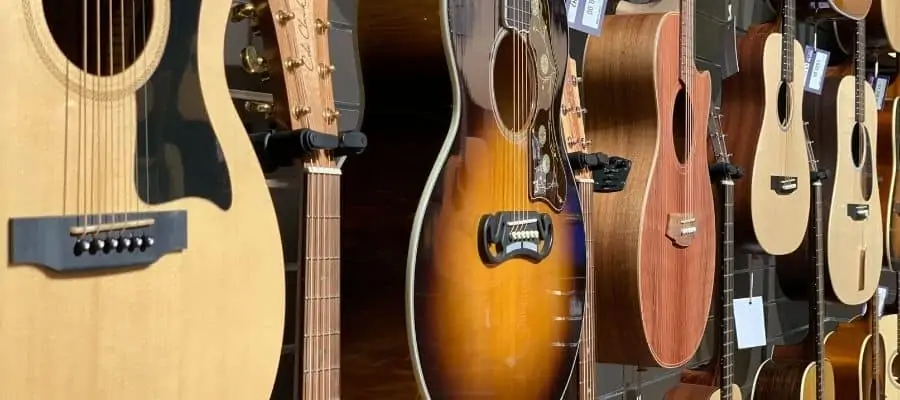
If you thought that things end with the dreadnought, you were wrong. Jumbo guitars are usually the biggest models you can find, and they were rather popular fifty years ago. Many blues, country, and rock n roll musicians used jumbo guitars, and the most famous player is undoubtedly Elvis Presley.
He played Gibson J-200, in a couple of performances that just increased the popularity of jumbo guitars. Needless to say, jumbo guitars can be uncomfortable for some people, and the best option is to play them with a strap.
Travel Guitar
Finally, I should mention travel guitars in a special category, since they often have a full-size scale length, but with a smaller body. These models are designed for traveling, and in cases when you can’t really carry a full-size guitar with you.
Naturally, these models have weaker sound, reduced volume, and they aren’t the best option if you plan to perform on them.
Different Electric Guitar Sizes

This leads us to the next category of guitar sizes, which is electric guitars. As you probably know already, electric guitars use pickups, and they are the most important part of the guitar for shaping the sound.
As a result, it gives manufacturers freedom to experiment with shapes and bodies, since electric guitars don’t have a resonating box. The shape of the body doesn’t affect the sound that much, and you can find countless different (and unique) shapes out there.
However, there are still a couple of rules you can find, and they are quite similar to the ones I mentioned for acoustic guitars. Firstly, the scale length is still an important factor when picking a guitar, and I already mentioned some of the “standards” for Gibson and Fender.
This means that you can also find a smaller version of popular guitars that will have a smaller scale length or body size.
There are also four different categories here as well, and electric guitars come in 1/4, 1/2, 3/4, and 4/4 sizes. Keep in mind that electric guitars are a bit different from acoustic ones, and if you played, for example, 3/4 acoustic guitar, it doesn’t mean that you’ll have to go for the same size electric one.
Electric Guitar Types Based On The Size And Shape
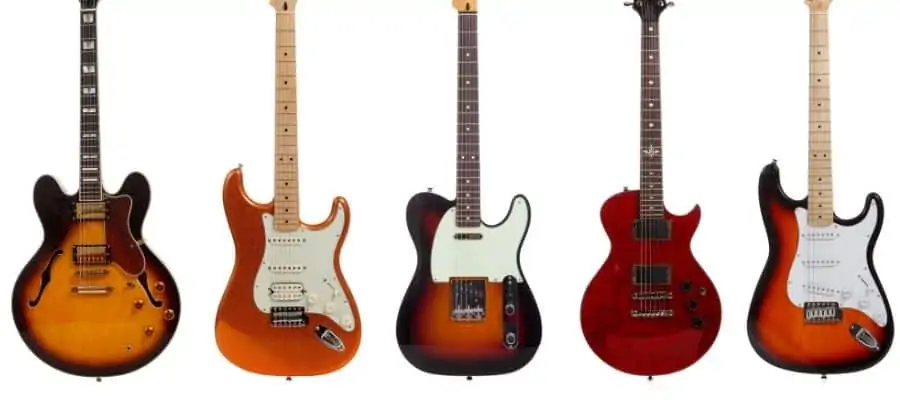
Talking about the shapes and sizes of electric guitars is almost pointless. The shape can be anything you want it to be. However, there are different types of electric guitars, and knowing what to expect can help you pick the right one.
Since electric guitars tend to be a bit heavier, this is one of the important factors when choosing the model for you.
Hollow Electric Guitars
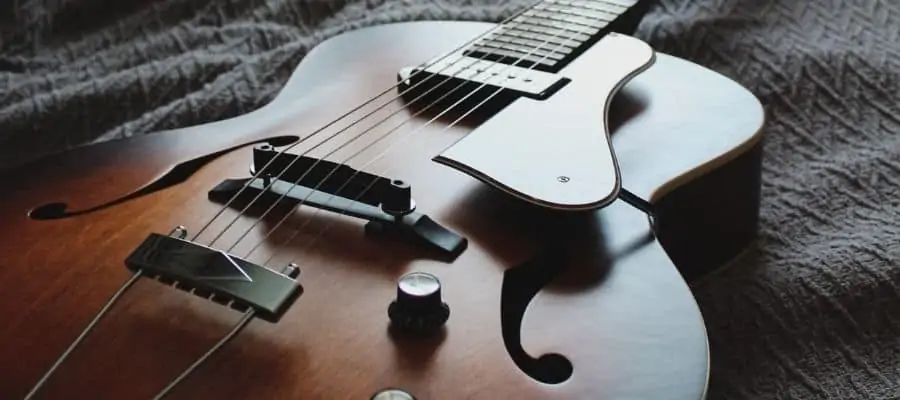
The first category is for the lightest guitars, and they are rather similar in design to acoustic ones. This means that these electric guitars have a resonating box inside, and you can play the majority of these models without an amp.
However, the guitar still has pickups, and they are in charge of shaping the tone of the instrument. While these guitars can have a lower weight, they tend to be larger due to the resonator inside. The sound coming out of the hollow guitars is usually cleaner, and it’s perfect for all the jazz and blues lovers out there.
Semi-Hollow Electric Guitars
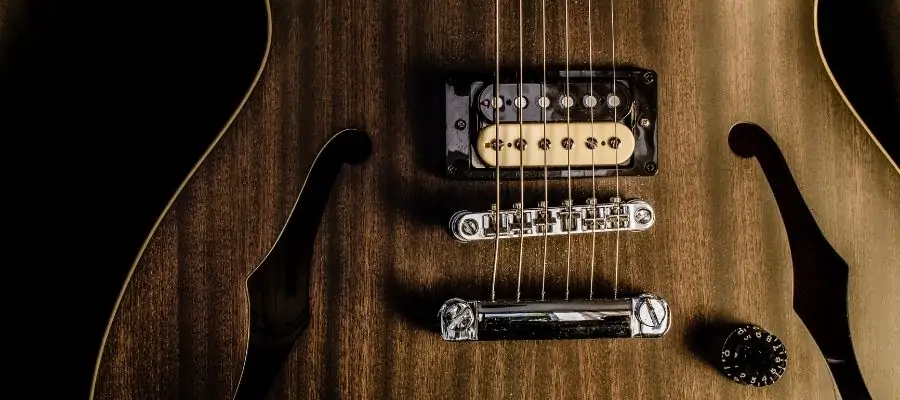
As the name suggests, semi-hollow guitars are just partially hollow. Usually, there is a wooden block in the middle of the guitar, going straight through the body (under the pickups). Semi-hollow guitars have a similar size as hollow ones, but they are a bit heavier.
These guitars are great for any type of music, but they are most common in blues and rock. Just keep in mind that a full-size guitar can weigh between eight and nine pounds (or even more).
Chambered Electric Guitars
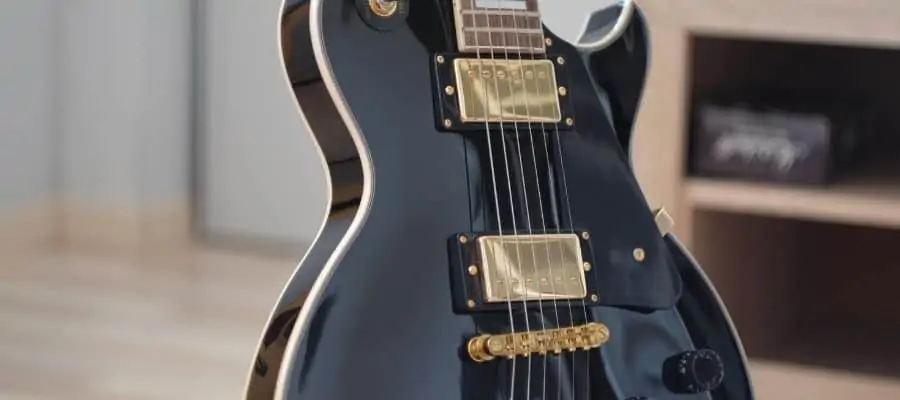
Chambered guitars are not as common as the other three types, and the idea behind them is quite simple. Instead of having a solid body guitar, the manufacturer will drill holes in the body to reduce the weight.
Naturally, you can see the holes on the guitar since they are covered by the top. At first glance, the guitar will look identical to the solid-body instruments, but the weight will be significantly lower.
The holes in the body of the guitar are similar to honeycomb patterns. Moreover, Billy Gibbons from ZZ Top loves this design so much that his guitars have chambered necks and headstocks as well.
Solid-Body Electric Guitars

Probably the first thing you think of when someone mentions electric guitars. Solid-body instruments have become so popular that it is almost challenging to find any other type. Two of the most popular brands Gibson and Fender mainly produce solid-body electric guitars.
Just take a look at their most popular models Les Paul and Stratocaster. The main difference between solid-body instruments and the ones I mentioned before is that these don’t have any holes or resonators on the body.
As for the shape, these guitars can have any type of shape. From standard Stratocaster shapes to cigarette box guitars. One of the things you’ll need to consider if you plan on buying a solid-body electric guitar is that they can be quite heavy. The solid wood in the body can be dense, which only increases the overall weight of the instrument.
How to Choose the Right Guitar Size?

Now, the question here is what type of guitar is your best option. Firstly, you will need to decide whether you want an electric or acoustic guitar. These two are almost different instruments since the techniques and ways of playing can be quite different.
Once you decide on the type of guitar you want to buy, the obvious question would be the type of music you listen to. The reason why this is essential is that not every guitar is equal for every music genre.
For example, if you plan on buying an electric guitar, and you love heavy metal, the obvious choice would be to buy something with humbuckers. While you can play metal on a telecaster, you will have an easier time finding the sound you like on a guitar with humbuckers.
One of the things you might have noticed is that people usually pick the electric guitar based on the genre. While heavier, electric guitars are not as robust as acoustic ones (models like dreadnought), and they can be suitable for almost everyone. Of course, if you are buying a guitar for your kid, junior models of electric guitars are available. They have smaller bodies and shorter scale lengths, which make them perfect for someone with smaller hands.
If you plan on buying an acoustic guitar, the choice is mainly based on the size of the instrument, and what is comfortable for you. Each of the sizes and models I mentioned can sound really good, and it is up to you to see which one suits you best.
I should mention that parlor guitars are rather popular with the ladies since the smaller size of the instrument is comfortable and easier to play. Personally, I dislike jumbo and dreadnought guitars since they can be too big.
Conclusion
Guitars come in all shapes and sizes, and you can find almost anything. The first thing you need to ask yourself is whether you are looking to buy an electric or acoustic guitar. If you like electric ones, the choices are usually not based on the size of the instrument.
If you are a fan of acoustic guitars, you can go from something smaller like a parlor guitar, or go for a bigger dreadnought similar to the D series by Martin. Both electric and acoustic guitars come in full-size or 4/4, and smaller versions like 1/4, 1/2, and 3/4.
For those looking to buy a first instrument, getting a smaller guitar is usually more comfortable and easier to play. Especially if you are buying it for your child. However, if you still have trouble deciding on the size, you can always visit your local music store, and try out a couple of different models.
This way, you’ll be able to see which one you like the most. As with anything related to music, there is no right choice, and the perfect one is the one suitable for you and your taste.
If you found this article useful, you may want to save this pin below to your Guitar board.
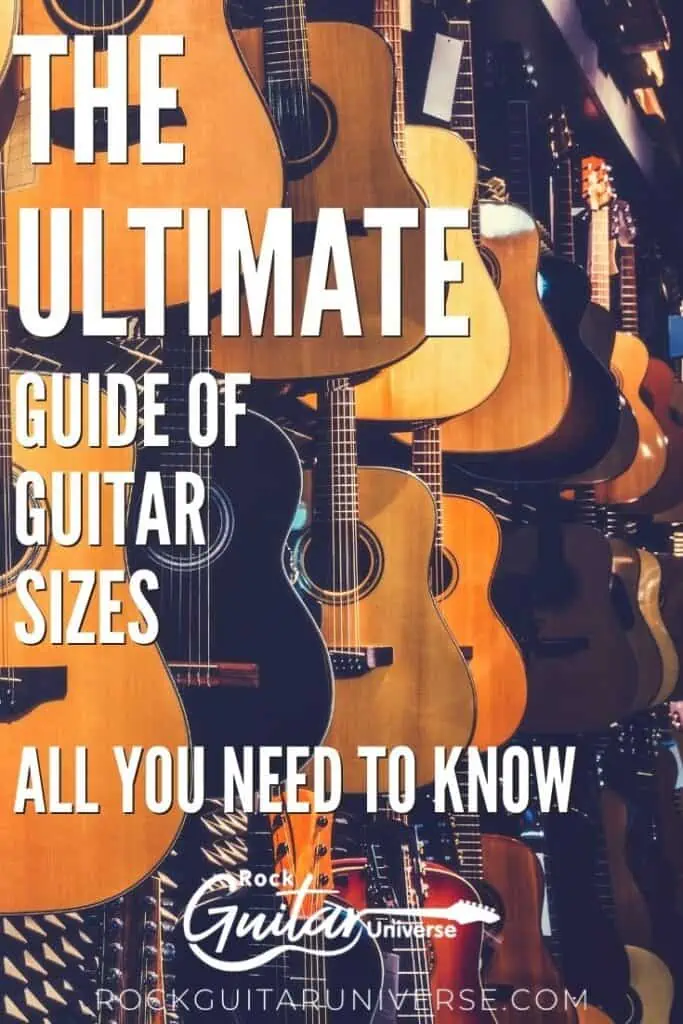
One thought on “The Ultimate Guide Of Guitar Sizes – All You Need To Know”
Leave a Reply
Recent Posts
Some guitarists insist on buying an expensive amplifier with their electric guitar. They assume that this is a must for every type of guitarist out there. However, in some situations, this isn’t...
Top 50 Free Realistic Guitar VST Plugins With Sound Examples
As technology has rapidly advanced in the recent decade, computers are stealing more and more roles from physical musical instruments and accessories. Nowadays, you do not need expensive amps,...

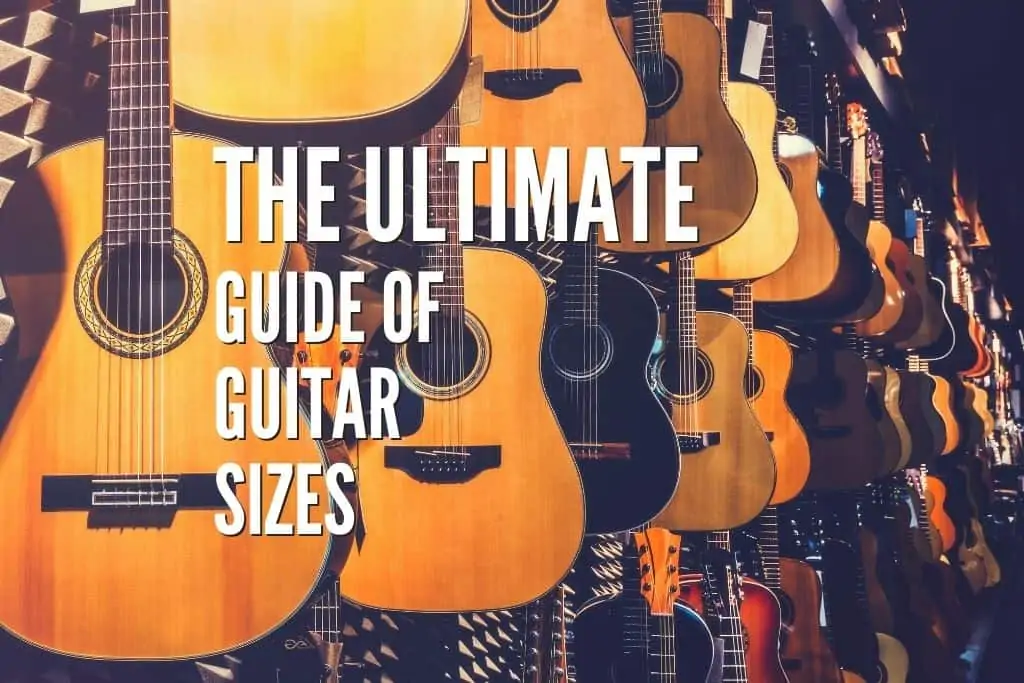
This was an excellent article. Thanks. I am not a guitar player but I am trying to 3D print a guitar for an inspiring artist. I’m trying to find the shape and the thickness etc.. so I can model it for him.